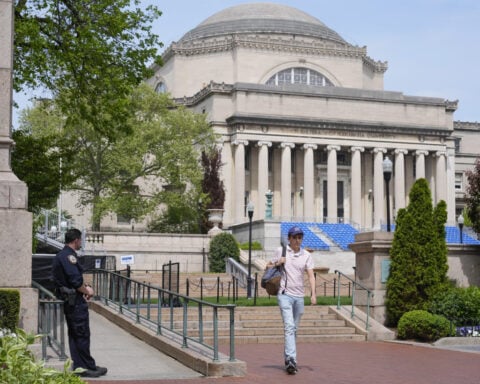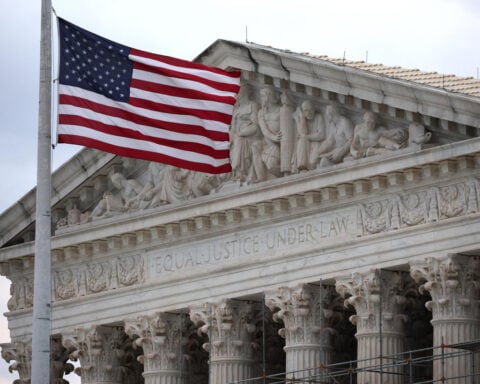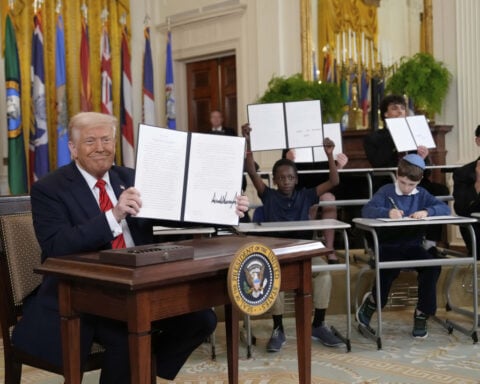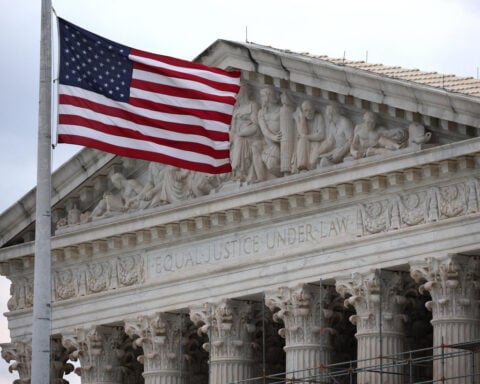The Research Brief is a short take on interesting academic work.
Written teacher comments about students can show implicit racial or ethnic and gender biases in school discipline, according to our recent study.
To identify these biases, we analyzed more than 3.5 million teacher comments about students from thousands of schools in the U.S. These comments were written in student office discipline referrals. Teacher comments were gathered from a web application used by schools to provide information such as when and where student discipline referrals occurred. When purchasing the application, schools can provide permission for their de-identified data to be used for research purposes.
Our study showed that teachers wrote more when describing behavior incidents of Black students compared with white students. They also used more negative emotions, words like “anger,” “hurt” and “disrespectful,” and used more verbs, such as “scraped,” “hit” and “spanked.” We found the opposite was true for Asian and Hispanic students compared with white students.
Further, we found that teachers used more words, negative emotions, verbs and impersonal pronouns when describing incidents for boys compared with girls.
Our research shows that written teacher comments about students vary by the students’ demographic backgrounds.
Research shows that certain types of words provide insights into what people are thinking, feeling and experiencing psychologically. For example, the use of impersonal pronouns, such as “it” and “this,” are terms related to depersonalization and can reflect greater psychological distance from one group to another.
Why it matters
According to the Office for Civil Rights, Black students account for nearly 15% of total public student enrollment but 30% of students suspended in school and 38% of those suspended out of school in the U.S.
Boys also receive substantially more office discipline referrals than girls, and Black girls are more likely to receive office discipline referrals than white girls.
These inequities in student discipline have both short-term and long-term negative consequences, such as poor student-teacher relationships and lower academic achievement. And these inequities are not narrowing.
Strategies for identifying and addressing teacher biases have remained elusive. One reason is that some biases are harder to identify than others. Explicit biases are more overt and can include a teacher making offensive comments based on the race, gender or disability status of their students.
Implicit biases, on the other hand, are more subtle. Implicit biases are more likely to affect decisions when teachers feel the need to act quickly, such as sending students to the office, without considering the consequences of their decisions. For example, implicit bias could explain why students of color receive more office discipline referrals than white students for subjectively defined behaviors, such as defiance, as opposed to stealing or property damage.
What’s next
Many schools are being more proactive about reducing disparities in discipline that removes students from school.
These equity-focused approaches include strategies for teaching educators how to analyze their discipline data for patterns. The strategies also show educators how to better take student culture into account and to stop implicit biases before they occur.
For example, teachers could use activities such as a classroom teaching matrix – or chart – to help students and themselves see the similarities and differences between expectations at school versus at home. Such activities can help educators adapt their classroom expectations to make it easier for students to navigate varying classroom expectations for their behavior.
Research is ongoing to evaluate the effects of these equity-focused approaches on school and student outcomes. Ultimately, we hope these approaches will prevent disproportionate disciplinary practices from occurring and place the focus on designing effective, safe and supportive school environments for all students.
Kent McIntosh receives funding from the U.S. Department of Education, including grant #R305A230399 from the Institute of Education Sciences.
Angus Kittelman, David Markowitz, and Maria Reina Santiago-Rosario do not work for, consult, own shares in or receive funding from any company or organization that would benefit from this article, and have disclosed no relevant affiliations beyond their academic appointment.
Source: The Conversation

 Trump has begun another trade war. Here's a timeline of how we got here
Trump has begun another trade war. Here's a timeline of how we got here
 Canada's leader laments lost friendship with US in town that sheltered stranded Americans after 9/11
Canada's leader laments lost friendship with US in town that sheltered stranded Americans after 9/11
 Chinese EV giant BYD's fourth-quarter profit leaps 73%
Chinese EV giant BYD's fourth-quarter profit leaps 73%
 You're an American in another land? Prepare to talk about the why and how of Trump 2.0
You're an American in another land? Prepare to talk about the why and how of Trump 2.0
 Chalk talk: Star power, top teams and No. 5 seeds headline the women's March Madness Sweet 16
Chalk talk: Star power, top teams and No. 5 seeds headline the women's March Madness Sweet 16
 Purdue returns to Sweet 16 with 76-62 win over McNeese in March Madness
Purdue returns to Sweet 16 with 76-62 win over McNeese in March Madness








